- Home
- investment
- news
- I spent $101 and less than an hour setting up the Trezor Model One. The crypto hard wallet is surprisingly easy to use and comes with the benefit of being one of the safest ways to secure crypto assets.
I spent $101 and less than an hour setting up the Trezor Model One. The crypto hard wallet is surprisingly easy to use and comes with the benefit of being one of the safest ways to secure crypto assets.
Kari McMahon

Kazi Awal/Insider
- Crypto hard wallets provide an increased layer of security for storing and transacting assets.
- I spent $101 on the "original hardware wallet," the Trezor Model One, to self-custody my crypto.
People can manage cryptocurrencies on centralized exchanges, software wallets, or hardware wallets.
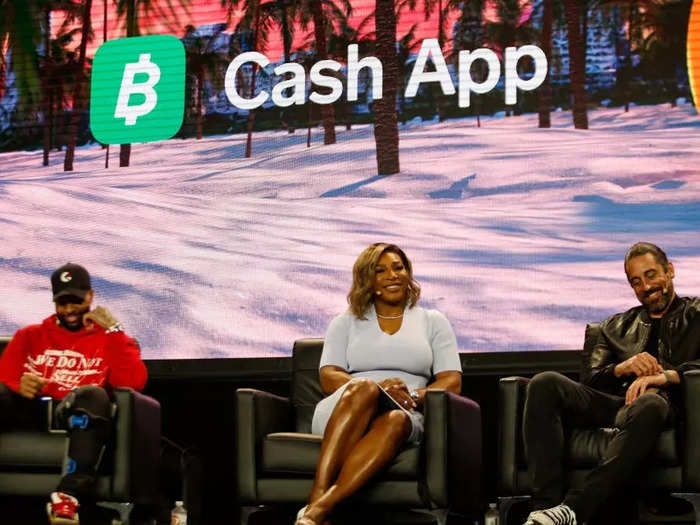
The superstar athletes Odell Beckham Jr., Serena Williams, and Aaron Rodgers discussing crypto at the Bitcoin 2022 conference in Miami. Marco Bello/Getty Images
Wallets allow for more secure storage and management of crypto assets.
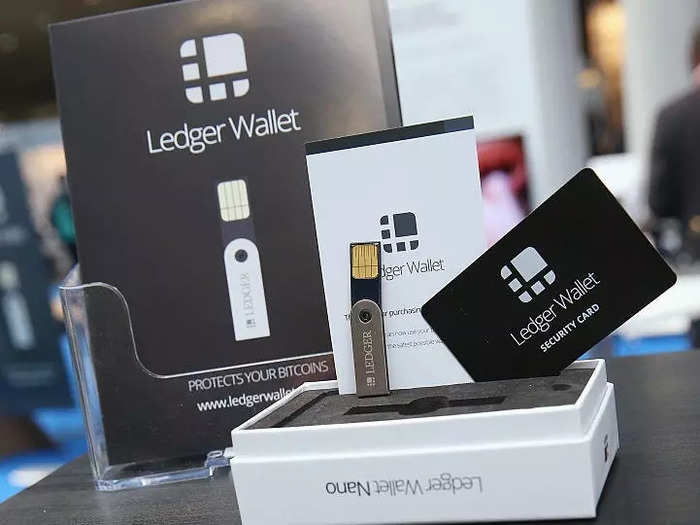
A stand displaying the Ledger crypto hard wallet. Sean Gallup/Getty Images
They hold people's private keys, which are needed to unlock the address of where the crypto assets are stored on the blockchain.
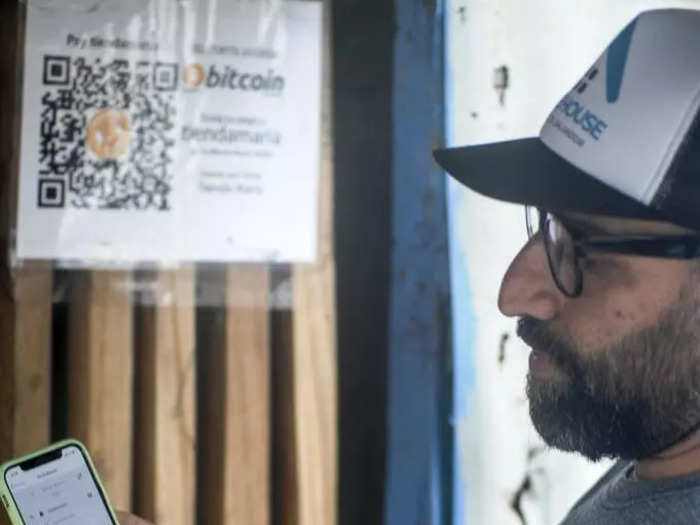
A man entering details into his bitcoin wallet. Camilo Freedman/Aphotografia/Getty Images
The private keys are used to sign transactions and verify that the cryptocurrencies are being moved by the owner.
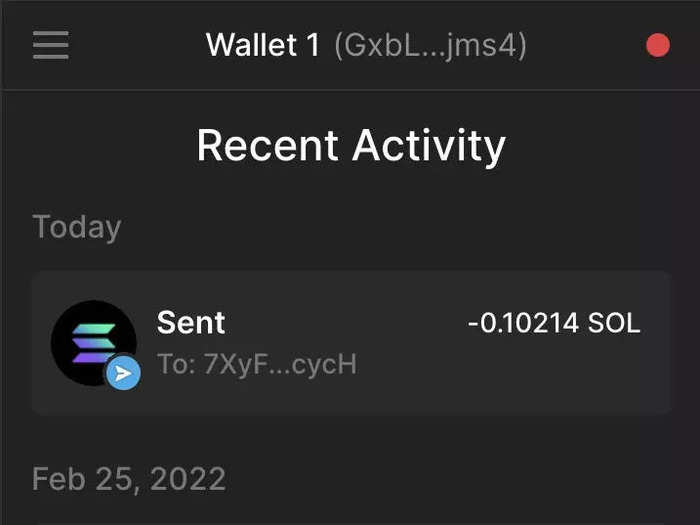
A crypto transaction on my MetaMask software wallet. Kari McMahon/Insider
I had $10.55 worth of crypto on the centralized exchange Coinbase. This is considered dangerous because I don't own the private keys and could be vulnerable to losses if the exchange is hacked or shut down.
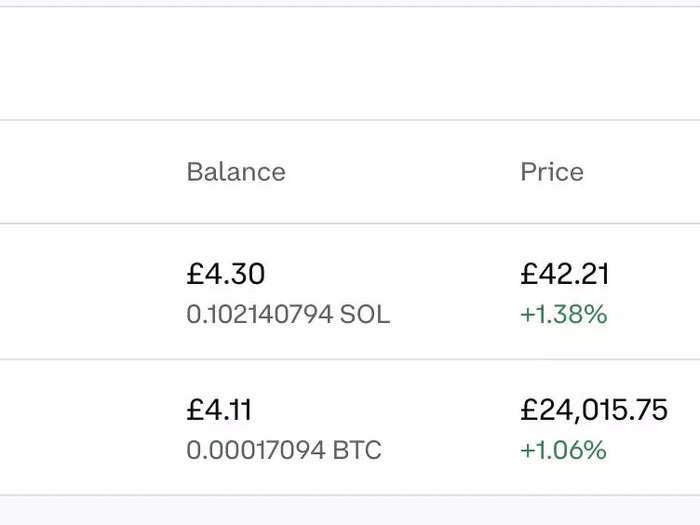
A screenshot of my crypto assets on Coinbase. Kari McMahon/Insider
The safer option is to self-custody the private keys using a hardware wallet. It stores my keys offline, mitigating the risks from online attacks. I spent $101 on "the original hardware wallet," the Trezor Model One.
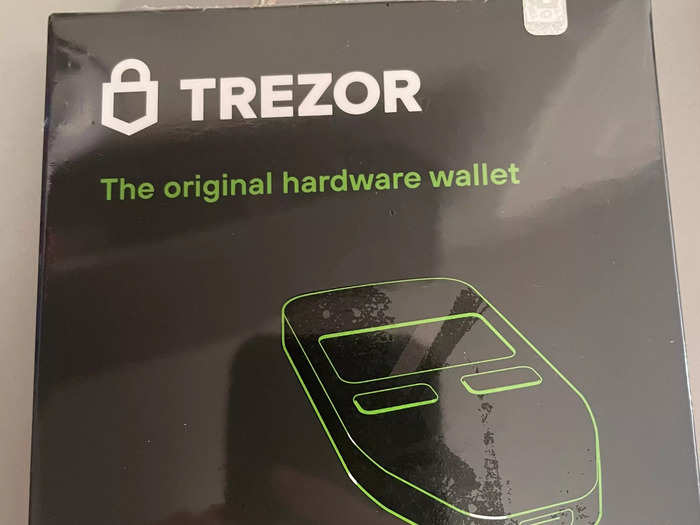
The packaging of my Trezor Model One. Kari McMahon/Insider
The wallet came in dainty packaging that could easily slip through a mailbox.
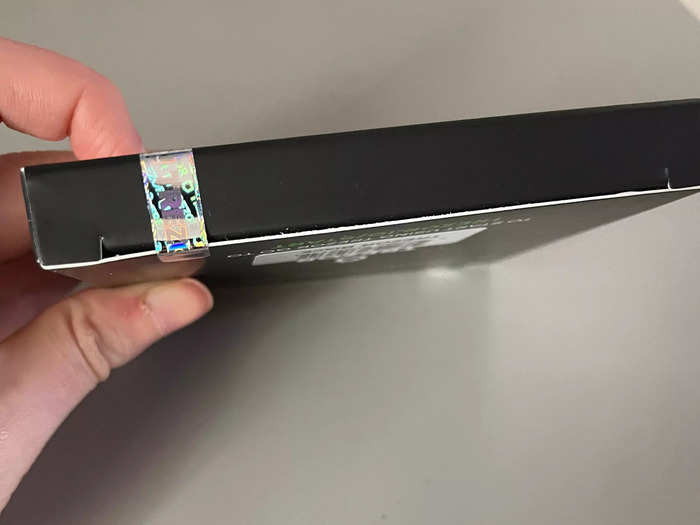
The mailbox-size packaging of the Trezor Model One. Kari McMahon/Insider
I planned to order from Amazon, but after reading reviews where users complained of wallet tampering, I decided to use Trezor's official site and wait slightly longer for delivery.
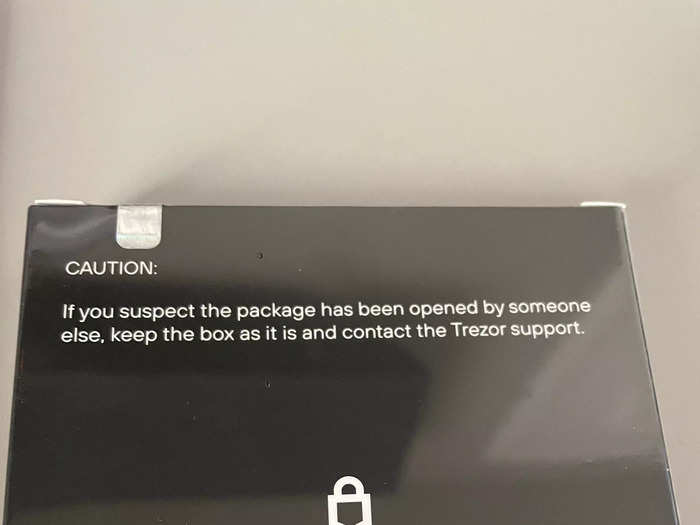
The back of the Trezor Model One package asks customers to watch out for tampering. Kari McMahon/Insider
I didn't need to worry about long delivery times. I ordered on a Thursday afternoon and received the package by Monday afternoon. The box has seals to ensure no one tampered with the wallet during delivery.
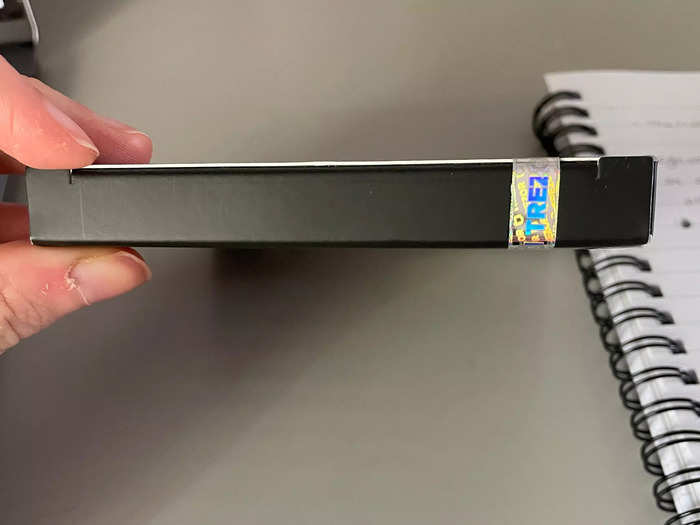
A seal on the edge of the Trezor Model One. Kari McMahon/Insider
Inside the packaging was the hard wallet, a USB cable, and a lanyard.
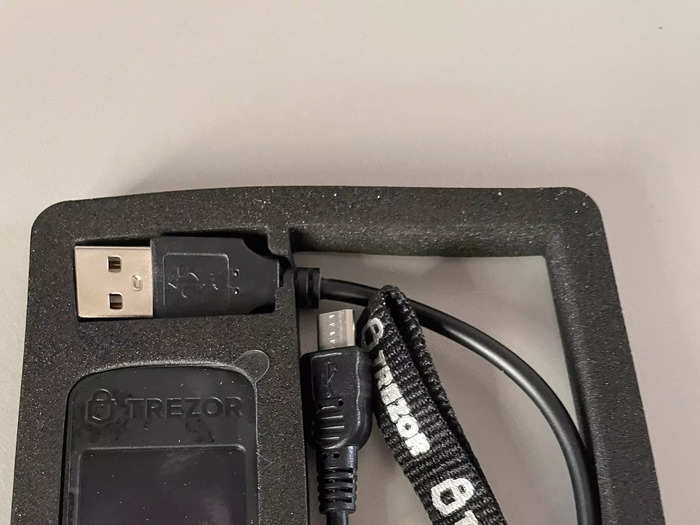
Trezor packaging contents. Kari McMahon/Insider
There's also a getting started guide and 2 recovery seed cards.
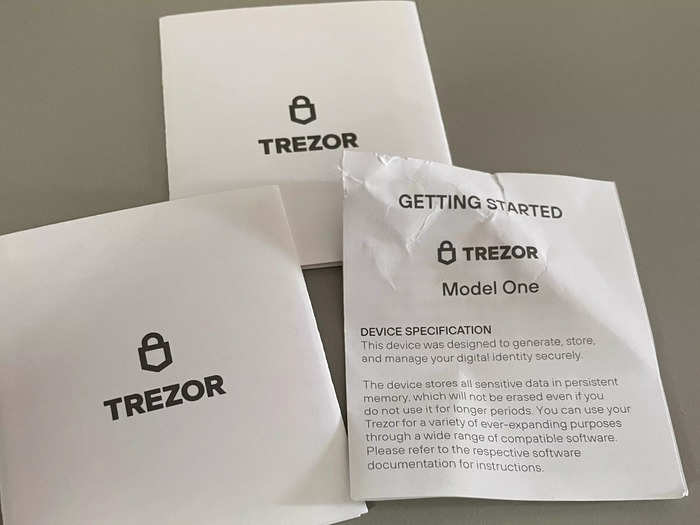
The Trezor Model One includes a getting-stated guide and two recovery seed phrase cards. Kari McMahon/Insider
I even got some nice stickers!
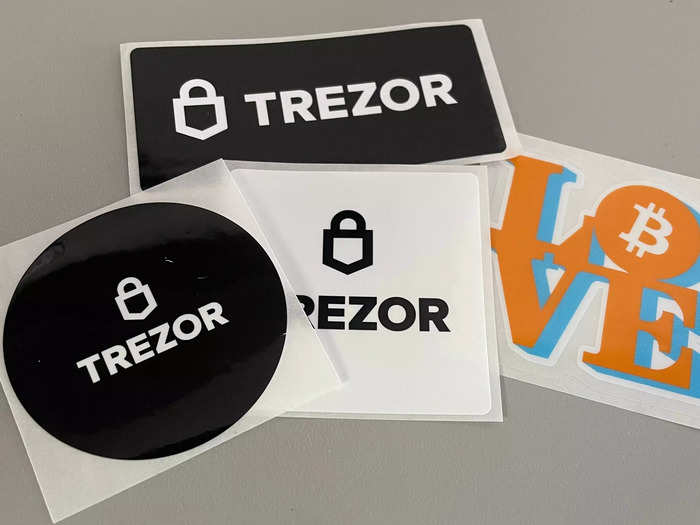
Four stickers come with the Trezor Model One. Kari McMahon/Insider
The instructions to get started are minimal. Instead, you visit trezor.io/start to start the setup process.
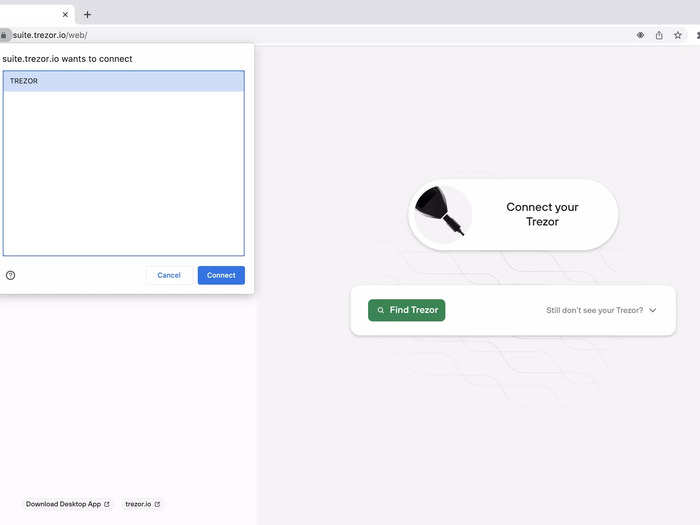
A screenshot of the Trezor web-browser setup page. Kari McMahon/Insider
I could choose between downloading the desktop app and using the web browser. Since I'd only be using the wallet for this story, I opted for the web browser. The instructions said the process would take about 5 minutes.
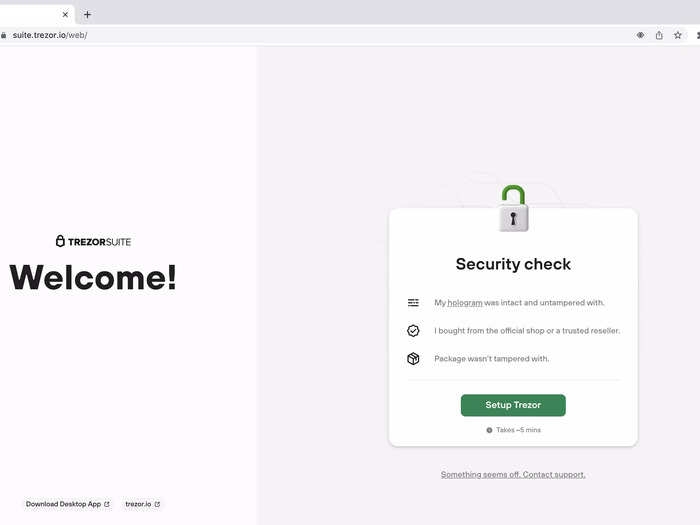
A screenshot of the setup process for the Trezor. Kari McMahon/Insider
The process took me a bit longer as I needed to make transfers and transactions on Coinbase. I spent time switching my solana to bitcoin because solana isn't accepted on the Trezor.
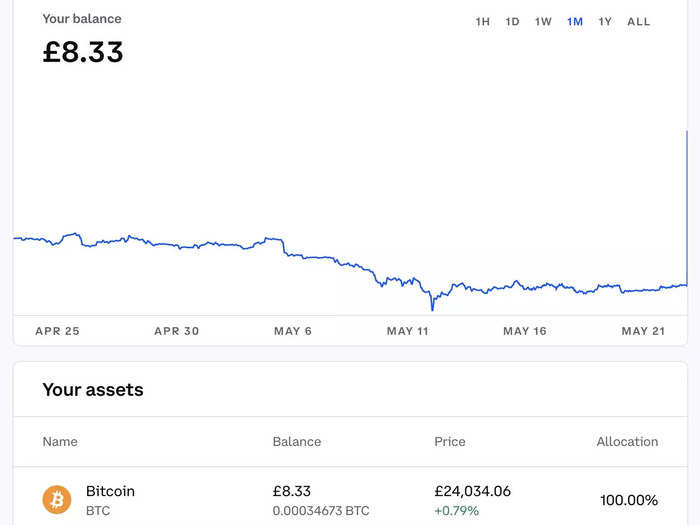
A screenshot of my Coinbase account after making the transfer from solana to bitcoin. Kari McMahon/Insider
The first step is installing the firmware.
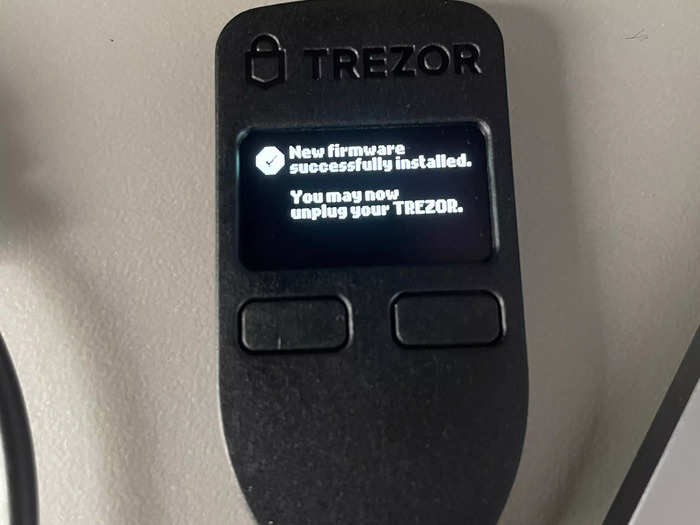
Installing firmware on my Trezor Model One. Kari McMahon/Insider
You can then choose to create a new wallet or restore from a backup. I decided to create a new wallet.
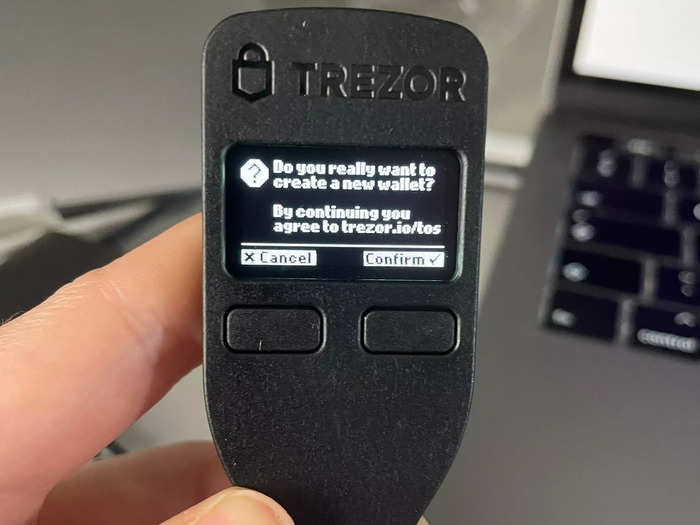
Creating a new wallet on the Trezor Model One. Kari McMahon/Insider
The wallet then provided me with a 21-word recovery seed phrase that I wrote on the cards provided.
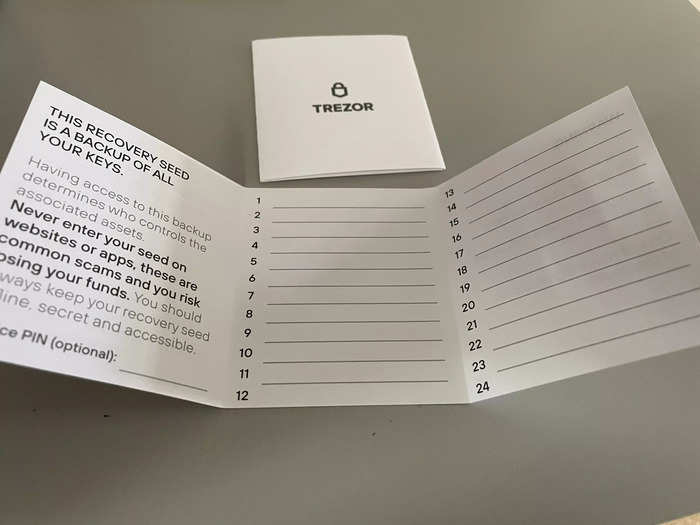
Two recovery seed phrase cards come with the Trezor Model One. Kari McMahon/Insider
I recommend thinking about how you plan to store seed phrases. A piece of paper can easily be lost or damaged. Accessories to store seed phrases, such as bulletproof capsules or safes, are worth considering as part of your crypto custody strategy.
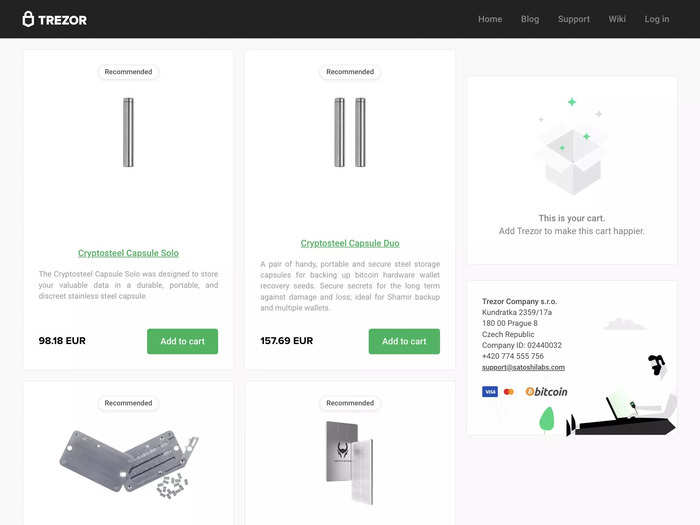
A screenshot of Trezor's accessories page online. Kari McMahon/Insider
To increase the security of the hard wallet, you can also set up a device pin.

You can set up a device pin using a combination of the Trezor hard wallet and the browser. Kari McMahon/Insider
The final step is to add the crypto assets you want to hold in the wallet. This can be changed at any time.
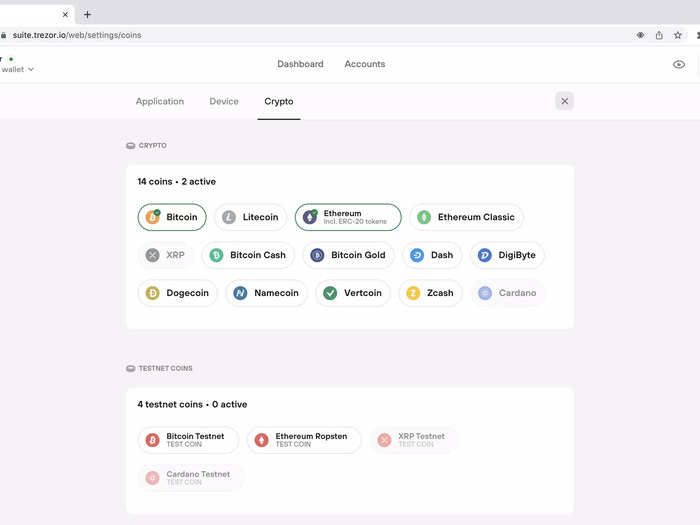
A screenshot of the crypto-assets selection for my hard wallet. Kari McMahon/Insider
With my wallet now set up, I clicked receive on the web browser and copied my bitcoin wallet address to receive my assets.
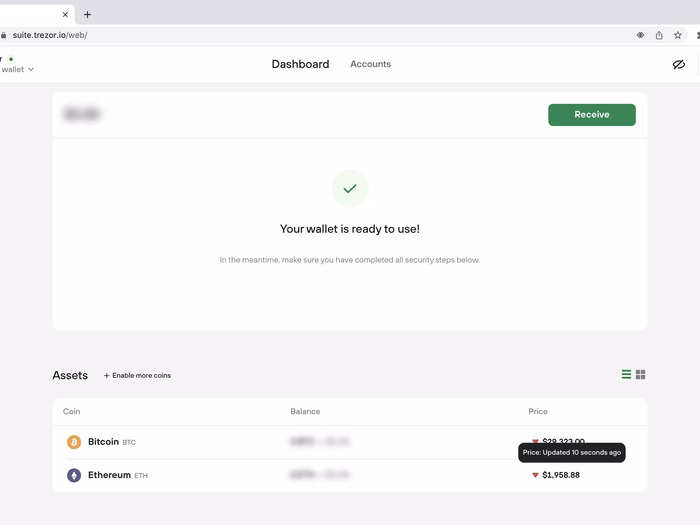
A screenshot showing my Trezor wallet crypto assets and overall portfolio. Kari McMahon/Insider
I entered this wallet address on Coinbase to send about $5 worth of bitcoin to the hard wallet. It was supposed to take about 30 minutes, but it arrived much sooner.
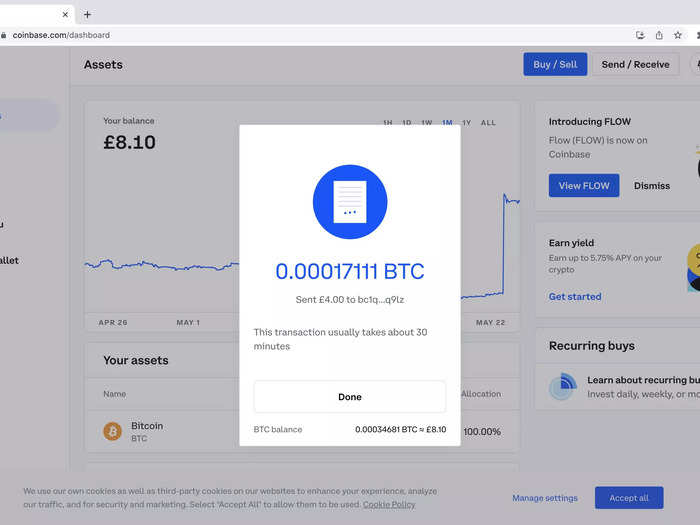
A screenshot of my transaction sending bitcoin to my hard wallet from Coinbase. Kari McMahon/Insider
The overall process took under an hour and was smooth. I expected the setup process to be frustrating and complicated, but I was impressed by how easy it was, considering the Trezor is one of the older wallets on the market.
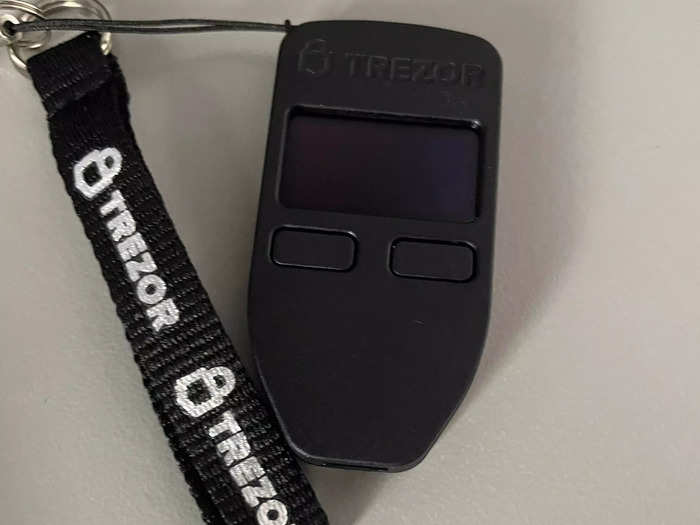
My Trezor wallet with its lanyard attached. Kari McMahon/Insider
I particularly appreciated the options to change the wallet's home screen, which helped make my wallet feel more personalized.
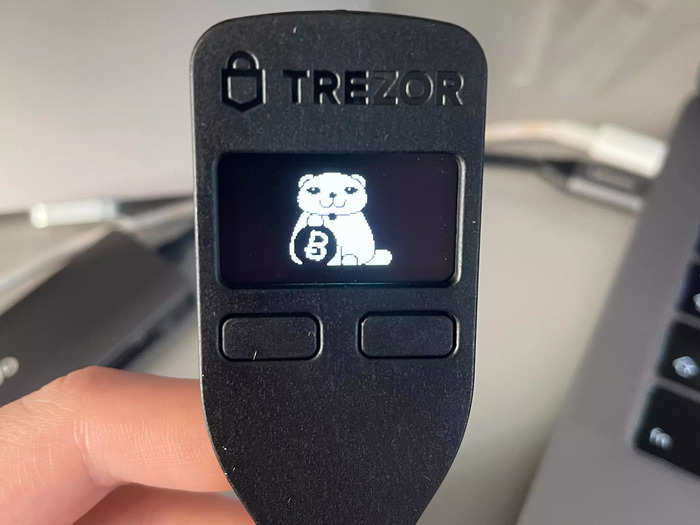
A cat home screen on my Trezor wallet. Kari McMahon/Insider
This article is intended to provide generalized information designed to educate a broad segment of the public; it does not give personalized investment, legal, or other business and professional advice. Before taking any action, you should always consult with your own financial, legal, tax, investment or other professional for advice on matters that affect you and/or your business.
READ MORE ARTICLES ON
Popular Right Now
Popular Keywords
Advertisement